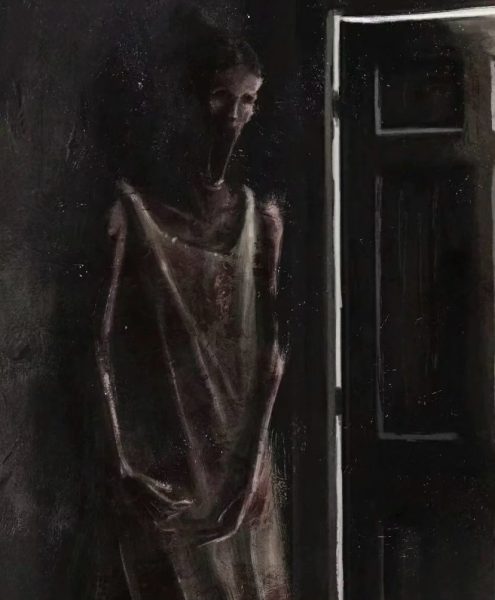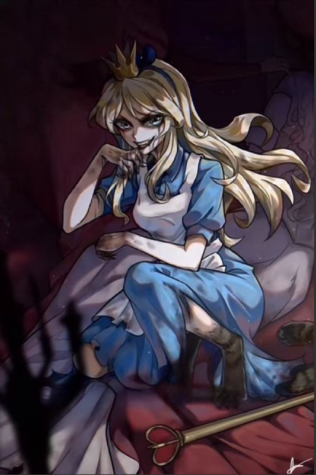Opinion: The House in Fata Morgana—More Than a Gothic Tragedy
May 14, 2023
‘Fata Morgana’ is a term named after Morgan le Fay, an enchantress from the legend of King Arthur, that refers to a mirage often seen over the ocean when light waves bend. The House in Fata Morgana is a Japanese visual novel originally released in 2012 before being brought to Nintendo Switch and PS4. Despite its age, the visual novel saw itself in the limelight after its ratings soared during the pandemic to rival high-performing games such as Breath of the Wild and Super Mario Odyssey.
The premise of the story is centered around a gothic mansion with a mirage-like appearance that seems to defy the flow of time. At the beginning, the audience is introduced to their role as a person suffering from amnesia, waking up in the mansion without any memories of events that transpired. A woman introduces herself as a maid and guides audiences through the eight ‘doors,’ or chapters, of the mansion’s history in an attempt to recover their memories. The first four doors contain four seemingly unrelated tragedy stories that span a millennium.
In the first door, players are introduced to Mell and Nellie, two siblings from a wealthy aristocratic family. Nellie, the younger sister, is clingy and lonely—she idolizes her brother and the affection he shows her. Yet as she fantasizes a prince and princess relationship, she forces unrealistic standards of masculinity on him. Nellie’s affection only serves to deepen Mell’s conflicting feelings between his perception as a weak-willed son and others’ expectations of him as the next family head. In 1603, a white-haired girl joins the estate as a maid. When Mell takes a liking to her, Nellie’s jealousy ultimately turns the siblings against each other, capsizing their relationship.
In 1707, the second door tells the story of Yukimasa, a man with a dual personality between human and beast, reminiscent of the novella Strange Case of Dr. Jekyll and Mr. Hyde. Unable to retain his humanity, Yukimasa terrorizes the villagers and unintentionally slaughters those most important to him.
The third door recounts the tragedy of Jacopo, a selfish and power-hungry businessman during the Industrial Revolution. Obsessed by the prospect of material wealth, Jacopo’s greed causes him to neglect and eventually destroy his relationship with his wife.
The fourth door takes place in 1099, where a girl is exiled to the mansion after being branded a witch and a heretic for her appearance. Inside, she meets a man who has been living in isolation for a decade, and although their relationship is initially fraught with misunderstanding, the two eventually develop romantic feelings toward each other.
Although seemingly unrelated, the four stories serve as a foundation for the next four chapters. Critics often claim that this ‘prologue’ overstays its welcome by dragging into unnecessarily long stretches of narration. However, The House in Fata Morgana answers each and every one of the harrowing mysteries it presents: Who is the maid? Who is the narrator? Whose memories are these? How are these stories related? Who is the white-haired girl, who reincarnates into each one of these stories? And lastly, who is Morgana, the cursed witch rumored to haunt the mansion?
What begins as a fragmented and achronological narrative unspools itself into a sprawling, thousand-year slow-burn love story both gripping and emotionally devastating. Despite being at times disturbing and uncomfortable, The House in Fata Morgana does not revel in the weight of its grief and depravity: it is ultimately a story about hope and forgiveness that emerges from the bleakest shores of the human condition. As it travels through various eras, the story commentates on a myriad of social ills, from classism to xenophobia, religious fanaticism to toxic femininity, and the unjust treatment of LGBTQ+ people. While taking inspiration from gothic, romantic, and classic works such as Romeo and Juliet, Fata’s detailed writing subverts these familiar expectations by liberally introducing perspective changes and elements of horror. Throughout its forty-hour runtime, the story is accompanied by beautiful art and a haunting soundtrack.
Fata is a visual novel, but some have disputed whether it can constitute a ‘video game’. Visual novels are mostly produced in Japan and revolve around making choices to progress the story forward, frequently centering around dating simulations [1]. Fata includes this decision-making aspect, but interaction is minimal as the visual novel is driven more by the story than the player. Nevertheless, the House in Fata Morgana is an unforgettable experience that pushes the boundaries of visual novels as a form of storytelling while deconstructing its stereotypes and the caveats of traditional tragedy stories.
[1] https://electrastreet.net/2019/11/what-are-visual-novels/









